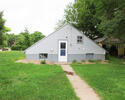Eight of the ten American cities with more than one million people lost population in 2020, according to estimates released by the Census Bureau. Note that these are only estimates; not official 2020 census numbers. read more »
Suburbs
The Working Poor Need Workhorse Vehicles
With more than forty percent of the EV’s in the entire country being in California at the end of 2020, the EV popularity in California has gotten President Biden so excited to want the rest of the country to follow California’s lead that Biden issued a new executive order that pushes for half of all new cars sold in America by 2030 read more »
- Login to post comments
Grandpa's Basement House
My mother-in-law was born in a small town in rural Nebraska in 1941. Her father was oversees fighting World War II for the first few years of her life, so she and her mother lived on her grandparents’ farm in a society absent of young men. read more »
- Login to post comments
A COVID Postcard from Australia
Australia’s response to Covid-19 has quickly turned from laudable to laughable. For a nation which only a few months ago seemed to be the toast of world leaders for having so effectively limited the spread of the virus and still growing its economy, to a nation now lagging on vaccination and struggling with lockdowns, the turnaround has been dramatic. read more »
- Login to post comments
Changing Boundaries, Changing Perceptions
What if I told you that Chicago is a midsized, dense urban hub of 800,000 people, surrounded by more than 400 suburbs anchoring a large metro area of 9.5 million? Or that Indianapolis reached its peak population of 476,000 in 1960, and has slipped below 300,000 for the first time since 1930? Or that New York City reached its population peak of 3.4 million in 1950, lost nearly a million people to fall to 2.6 million by 1980, and once again crossed the 3 million person threshold just this past decade? read more »
- Login to post comments
The Suburbs Will Thrive or Fail on Their Own Terms
In March I bought a modest, two-bedroom 1950 tract house in Madison, Wisconsin. It’s not going to win any awards for cutting-edge design, but it’s solid, respectable, and in a safe, quiet neighborhood with a premium school district. read more »
- Login to post comments
Minorities Dominate Suburban Growth
There continues to be a perception among many that America’s suburbs and exurbs are overwhelmingly White-Non-Hispanic, with little minority population. Nothing could be further from the truth, is indicated by an analysis of major metropolitan area growth, using the City Sector Model read more »
Millennials Are a Lot Less Progressive Than You Think
Millennials have long been cast as the great progressive hope, or "New Progressive America: The Millennial Generation," as one study would have it. read more »
- Login to post comments
Upward and Outward: America on the Move
These are times, to paraphrase Thomas Paine, that try the souls of American optimists. A strain of insane ideologies, from QAnon to critical race theory, is running through our societies like a virus, infecting everything from political life and media to the schoolroom. read more »
- Login to post comments
Biden Admin Shortchanges Suburbs for Coronavirus Relief Money
Urban boosters, which includes the largely urban based media class, often complain that red state governments have it in for blue cities. There’s a frequent stream of argumentation to this effect, such as this new piece in Politico on how states are taking power away from mayors. read more »






















